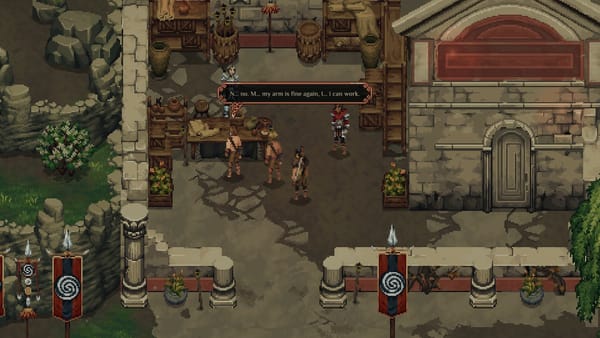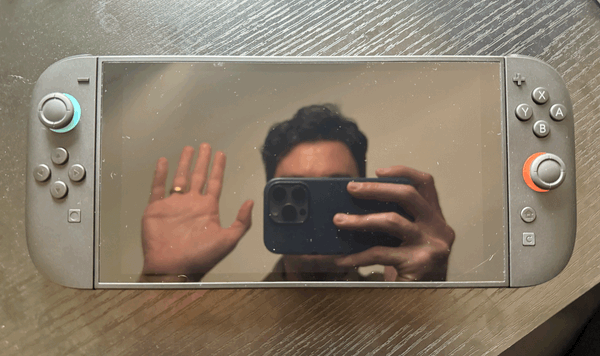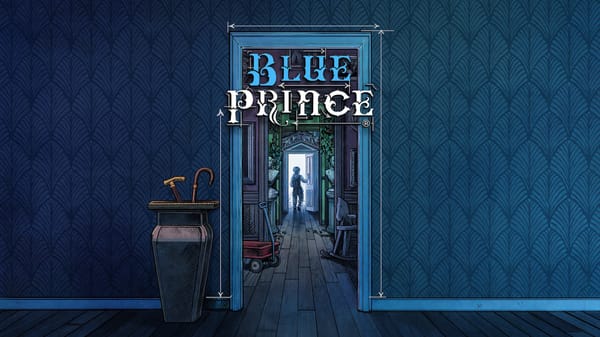Death’s Door and the joys of big-ass fonts
DEATH
My wife’s favorite games to watch are the ones that kick my ass. When we first started dating, I was trying to get into the Soulsborne franchise by way of Dark Souls III. I’d played a little Bloodborne before this, but III was my first honest attempt at building the patience and focus required to complete a FromSoftware game. That, and learning not to push too far when it came to when I healed. “Estus, honey—Estus!” has become shorthand in our house for “Heal! For chrissakes—heal!” Risk mitigation is not my strong suit. To this day, one of our favorite shared gaming moments was in Dark Souls III when Sister Friede got back up for a third phase, my sorrows compounding as my wife’s laughter swelled in tandem.
So it was with Death’s Door whenever I died. Upon your many expirations, the screen fills with an all-caps DEATH. Words don’t do it justice:
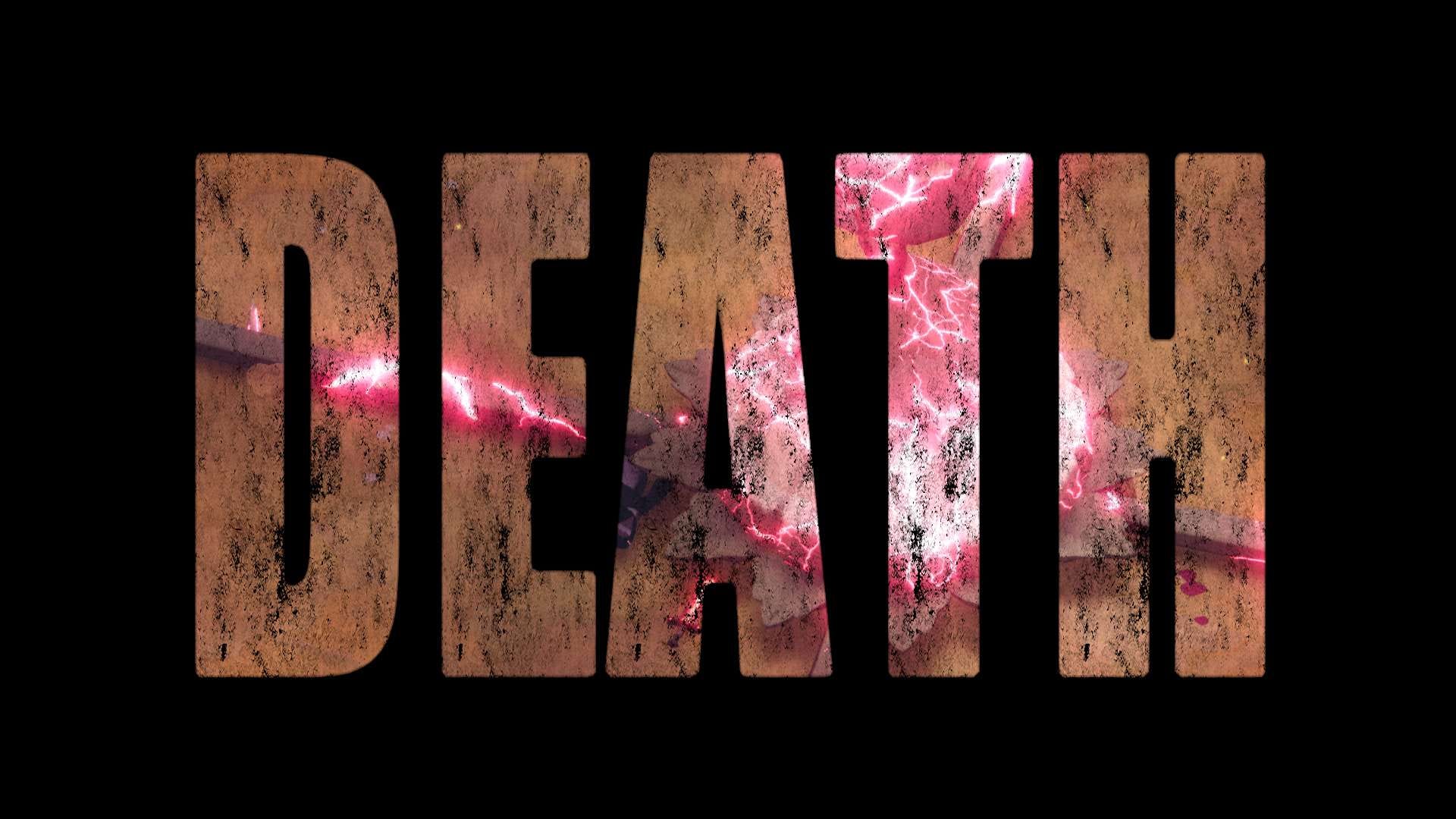
What a font! The first time it happened, I too genuinely laughed out loud. I’m used to the old “You Died” or “Game Over,” but for a game to hit you with the ol’ proper noun? That’s great. It didn’t hurt that, through the cutout of the font, the game kept moving while slightly zoomed in on your corpse, with whatever killed you still stomping away at your head. This is also one of my wife’s favorite things about Dark Souls—that the enemies continue to wallop you even after they’ve successfully killed you. Stomps, slices, giant bowl slams, you name it. The enemies of Dark Souls wanted to make sure you were really, truly dead. Same in Death’s Door, only cuter.1
Besides its difficulty and the joyful way with which it dispatches you, Door shares less with Dark Souls and more with the 2D Zeldas of old, with a topdown isometric view, dungeons, puzzles, and what may as well be heart pieces. Mix in some bullet hell bosses, an overall tone that straddles parody and dark sincerity, and those silly, over-the-top fonts, and you’re left with a short but focused experience that punches above its weight class. The Zelda DNA goes so far as to reward you for applying Dodongo logic to one of the bosses, a giant frog who just so happens to be the boss of the level where you get the bombs. Like Star Wars Jedi: Fallen Order before it, Death’s Door wears its influences on its sleeve. The difference for me is the sheer exuberance with which it does so.
Take the aforementioned frog boss, for example. Every boss is introduced with a screen-filling title and subtitle, a flashy bit of presentation backed up by beautiful sound design which emphasizes the text by bringing in the boss’ music one layer at a time. It’s impactful and cool, but by the time you get to frog man, this introductory flair is familiar to you. You know he’ll have some name and an appropriately epic description. Except that, well, frog man is boastful. The whole level leading to his fight, he’s singing his own praises. Pumping himself up while tearing you down. So when you finally get to him, the game hits you with this:
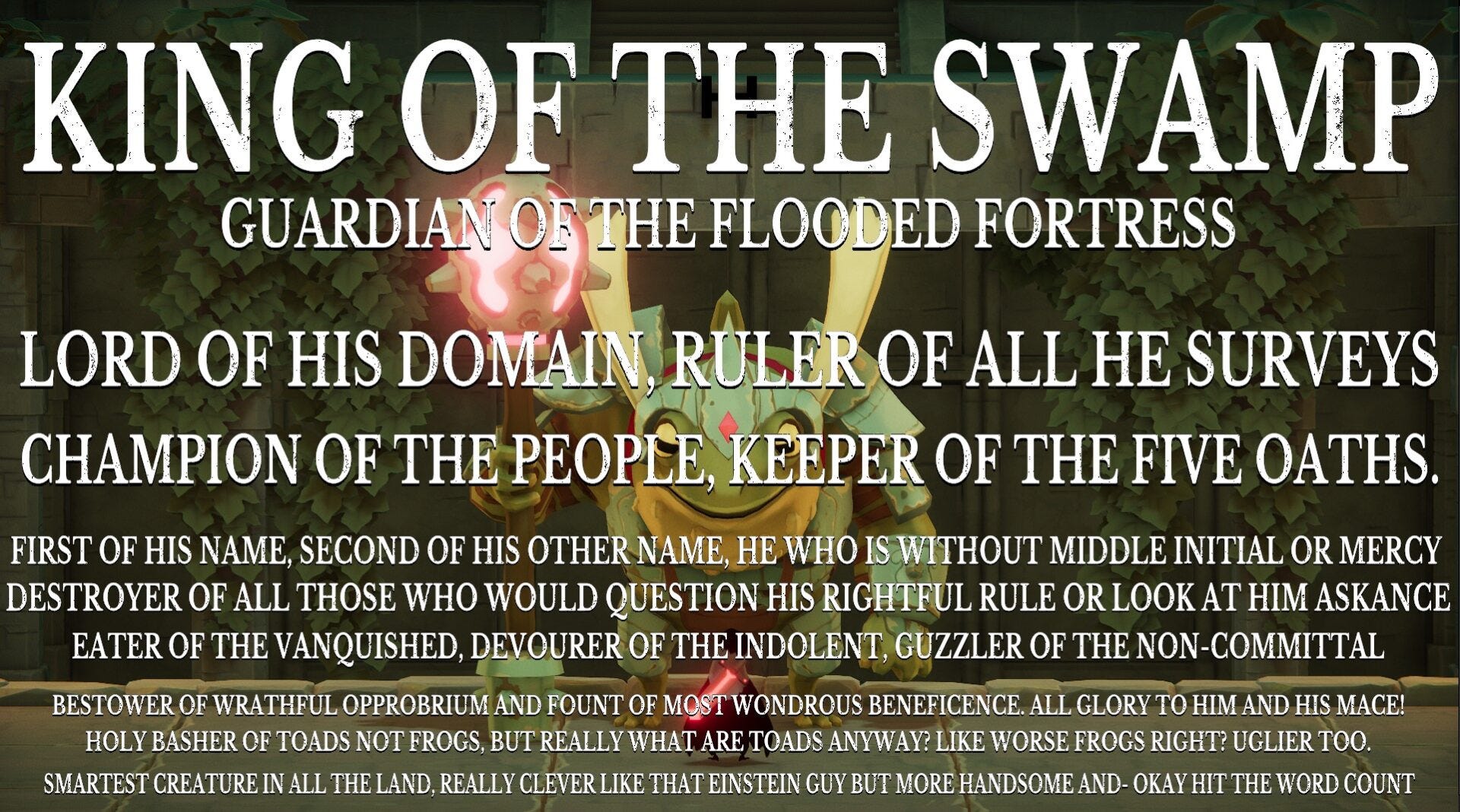
I mean, what’s not to love? He’s also a blast to defeat, that classic boss that builds on all the mechanics you needed to learn to reach him, a pattern that is further developed with each successive boss fight, right up until the game’s thrilling final sequence. As far as final bosses go, it passed my wife’s spouse-ass-kick-ometer. For me, it felt up there with Breath of the Wild’s final sequence in terms of how it challenges the player with proving their mastery of the design language developed throughout the duration of the game. And, yes, the final boss does have their own big-ass font introduction. And, yes, it is great.
If I have one gripe with the game, it’s that it features a disappointingly grindy optional postgame quest. Without spoiling much, the game lets you continue playing after its natural conclusion, tasking you with a few more errands that have you traipsing back across the entire map. Unfortunately, these tasks are uneven in terms of their enjoyability and lead to nothing but a final cutscene that sets up some kind of interconnected gamiverse I couldn’t care less about. It felt like a letdown after such a well-paced main game.
But—you don’t have to do any of that! And I would recommend you not. Because everything else about Death’s Door is delightful. It has a sense of style and confidence most big-budget titles lack. It’s right in the pocket of hard but not soul-crushing. And it hits you with that fullscreen DEATH each time you die. That’s fun. I can’t emphasize enough how fun that is.
For a game obsessed with death, this is a joyously weird romp through the afterlife.
If you ignore the blood spatters, that is. Entrails aside, it’s a cute game, I swear. ↩


